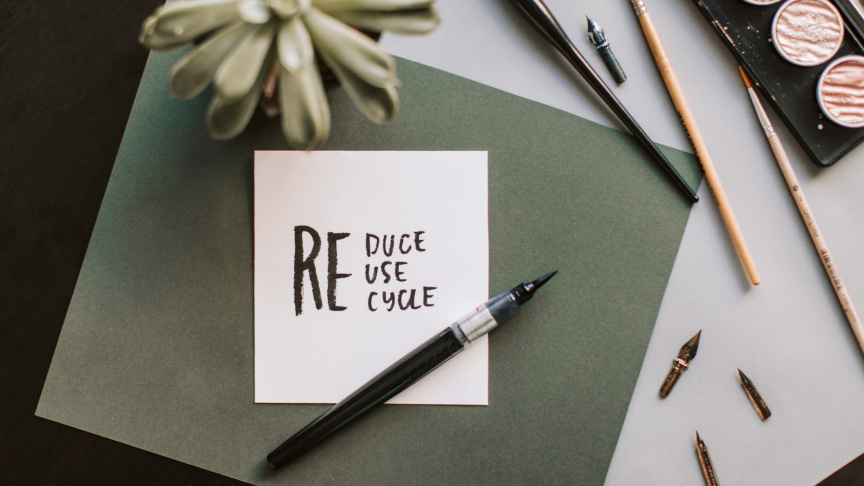
An environmentalist’s motto.
What does this actually mean? How do we go about doing this? And why should we?
Every year in the UK, around 1.6m tonnes of ‘bulky waste’ is thrown out and ends up buried in landfill or burnt in an incinerator. Many of these bulky items are in fact furniture that is re-usable in its current state, or may need a little fixing or just repurposing.
This is where upcycling comes in.
Upcycling is the process of renovating, updating, repainting or otherwise improving an existing piece of furniture and other household items. In the past, upcycling was standard practice as money was often short and furniture was made well and lasted for years.
The furniture we see in charity shops these days tends to be from before the 80s, simply because then onwards we saw the furniture industry transform in the same way fast-fashion transformed clothing. Cheap, poorly-made, mass-produced items that simply do not have a long shelf life. Surely this is detrimental to the environment.
We can help protect the environment by reducing what we buy new, reusing and repurposing what we already have, and recycling at the end of a product’s lifecycle. This avoids deforestation, not to mention the use of energy and the emission of greenhouse gases produced during the manufacturing and delivery process of new furniture. In this way, it slows the constantly turning cogs of industrialisation. It’s also good for our wallet; repainting existing furniture to match new interior schemes, or to hide cosmetic wear and tear is much cheaper than buying brand new to replace perfectly serviceable kitchen cabinets, shelving units, dining tables, and whatever other pieces we may have at home.
Tidy space, tidy mind. Invest in your space as an extension of investing in yourself. A lick of paint can transform a space, thereby giving you a renewed love of your home, restoring pride in your surroundings, and providing unequivocal proof of your own capabilities! You may wish to choose colours which create a tranquil space to promote mindfulness; something bright and bold to spark joy; or something neutral to declutter your space. Whether you transform your work desk, your kitchen cabinets, or even your front door, you’ll have a renewed appreciation for that space.
NHS research shows that learning new skills can also improve your mental well-being by:
- boosting self-confidence and raising self-esteem and self-worth
- helping you to build a sense of purpose
- helping you to connect with others
Meditation and mindfulness are both well-researched and proven coping mechanisms for managing stress and anxiety. Stress and anxiety can lead to or exacerbate depression. When you meditate, you are better able to ignore the negative sensations of stress and anxiety, which explains, in part, why stress levels fall when you meditate.
Furniture painting allows me to meditate in a way I just can’t when sitting still. When I’m painting it feels like the stress flows out from my head, down through my arm and out through the brush. I feel as though I’m painting my troubles away.
Using more colour in your home can have an impact on mood. Find a shade which reminds you of a happy time, place, or image. Perhaps a bright red like your first ever pair of shoes; a sea blue conjuring happy holiday memories; or a shade of green that reminds you of a scarf your mother used to wear. Colour is a deeply personal thing and there is no one-size-fits-all shade to improve your mood. There will, however, be a hue that does boost your mood and will elicit a smile whenever it catches your eye.
Psychologists and art therapists agree that being creative can increase positive emotions, lessen symptoms of depression, relieve stress, minimise anxiety, and even help our immune system, especially when rediscovering your own creative abilities. If you’ve found work, parenting, or life in general have come between you and your own creative expression, painting furniture can be a fabulous way to rediscover your inner artist. The satisfaction of transforming something yourself will build confidence and bring happiness long after your brushes are washed up.
By Tanu Bashir


